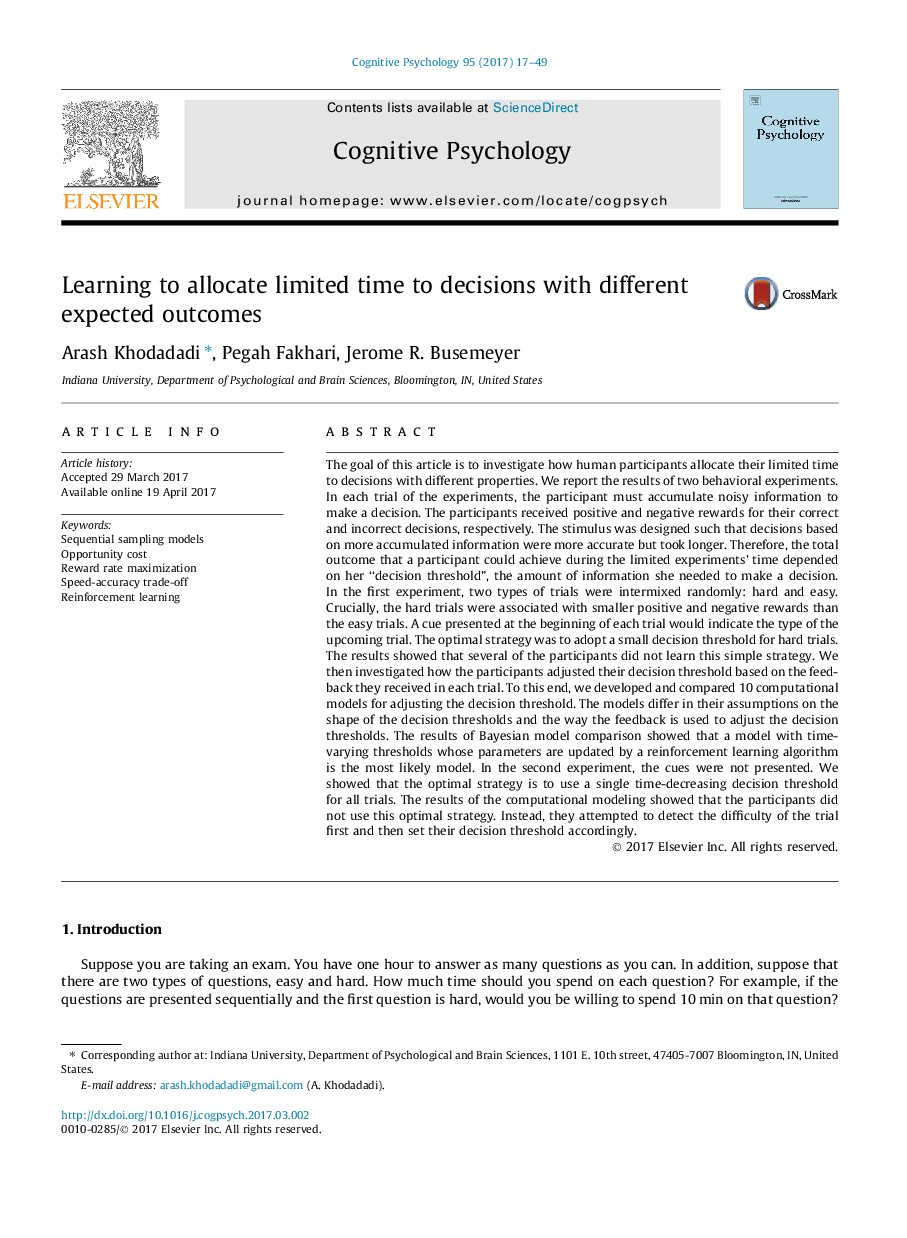| کد مقاله | کد نشریه | سال انتشار | مقاله انگلیسی | نسخه تمام متن |
|---|---|---|---|---|
| 5039710 | 1473369 | 2017 | 33 صفحه PDF | دانلود رایگان |
- A new decision making paradigm for studying speed-accuracy trade-off is developed.
- A new evidence integration task is developed.
- Several computational models for adjusting the decision boundaries in the experiments are developed and compared.
- The results favored a model in which time-varying boundaries are adjusted using a reinforcement learning algorithm.
The goal of this article is to investigate how human participants allocate their limited time to decisions with different properties. We report the results of two behavioral experiments. In each trial of the experiments, the participant must accumulate noisy information to make a decision. The participants received positive and negative rewards for their correct and incorrect decisions, respectively. The stimulus was designed such that decisions based on more accumulated information were more accurate but took longer. Therefore, the total outcome that a participant could achieve during the limited experiments' time depended on her “decision threshold”, the amount of information she needed to make a decision. In the first experiment, two types of trials were intermixed randomly: hard and easy. Crucially, the hard trials were associated with smaller positive and negative rewards than the easy trials. A cue presented at the beginning of each trial would indicate the type of the upcoming trial. The optimal strategy was to adopt a small decision threshold for hard trials. The results showed that several of the participants did not learn this simple strategy. We then investigated how the participants adjusted their decision threshold based on the feedback they received in each trial. To this end, we developed and compared 10 computational models for adjusting the decision threshold. The models differ in their assumptions on the shape of the decision thresholds and the way the feedback is used to adjust the decision thresholds. The results of Bayesian model comparison showed that a model with time-varying thresholds whose parameters are updated by a reinforcement learning algorithm is the most likely model. In the second experiment, the cues were not presented. We showed that the optimal strategy is to use a single time-decreasing decision threshold for all trials. The results of the computational modeling showed that the participants did not use this optimal strategy. Instead, they attempted to detect the difficulty of the trial first and then set their decision threshold accordingly.
Journal: Cognitive Psychology - Volume 95, June 2017, Pages 17-49
